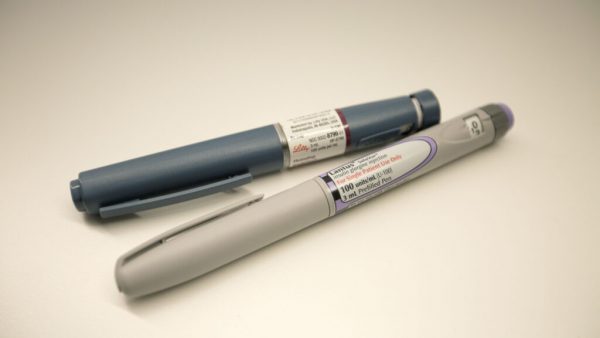
Here’s the kind of headline that has been appearing a lot recently, but it is more jarring — and worrisome — when it appears in the New England Journal of Medicine: “The U.S. Insulin Crisis — Rationing a Lifesaving Medication Discovered in the 1920s.”
The sentiment that Americans are now paying dearly for the insulin pioneered nearly a century ago have helped fuel attacks against the biopharmaceutical industry, enabling politicians like Sen. Bernie Sanders (I-Vt.) to depict companies as being “very, very greedy and corrupt” as he led people with diabetes and their family members on a high-profile bus trip to Canada to buy this medication.
The view that a lifesaving 100-year-old medicine like insulin could be too expensive for patients, and that some people with diabetes are rationing it, should appall all Americans. Insulin was first administered to someone with diabetes in 1922. Frederick Banting, Charles Best, and James Collip, who were awarded a patent on it, sold the patent to the University of Toronto for $1 each. Why? Banting reportedly said that insulin “belongs to the world, not to me.”
advertisement
No wonder people are upset.
The insulin that Banting and Best first administered to a patient in 1922 was isolated from the pancreas of an ox. It was short-acting, and had to be administered multiple times a day. Early work by drug companies like Eli Lilly improved the drug’s biological profile by formulating it with things like zinc or protamine, leading to longer-acting agents. Insulin derived from the pancreas of animals would be the mainstay for the next 60 years.
A big breakthrough occurred in the late 1970s when scientists at Genentech prepared human insulin by inserting the human gene for it into E. coli bacteria. This was a significant advance, because human insulin is far less allergenic than that extracted from animals.
Eli Lilly signed an agreement with Genentech to commercialize recombinant DNA insulin and, in 1982, Lilly brought to the market Humulin R (rapid-acting) and Humulin N (intermediate-acting). Despite the availability of human insulin, though, there was still value in finding versions that more closely mimicked the physiological behavior of insulin naturally made by the pancreas.
The age of synthetic insulins was born. Analogs were prepared in which the amino acid sequence was altered to optimize insulin absorption, distribution, and excretion. Eli Lilly again led the way with the launch of lispro, an analog sold as Humalog. Other analogs followed, with each generation offering improvements over earlier versions. Sanofi’s Lantus (insulin glargine) is one such agent. It is dosed once a day and provides blood sugar control over 24 hours for individuals with both type 1 and type 2 diabetes.
Insulin has come a long way since 1922. People with diabetes are no longer using preparations derived from animals. We have new insulins that can closely mimic natural physiological conditions, and which are safer than the older agents. But to get to this place, the biopharmaceutical industry has invested billions of dollars in research and development. And they patented these medicines.
I’m not offering a whirlwind tour of the history of the last 100 years of insulin research and development to justify the cost of these new drugs, nor to shine a light on the drug pricing differences in the U.S. versus Canada and other Western nations. Instead, I think it’s important to make clear that the insulin used in 1922 is not the same things that’s in the crosshairs of industry critics. It is also meant to correct the misleading headlines that imply that the biopharmaceutical industry’s practices are the cause of “rationing a lifesaving medication discovered in the 1920s.” That’s just not true.
It should be noted that Walmart sells Novolin, a human insulin made by Novo Nordisk, for a mere $25 per vial (a vial can provide about 10 days of therapy) — and you don’t need a prescription for it. Novolin can be viewed like a generic in that it’s an older version of human insulin that does not afford the benefits of the newer insulin analogs in terms of 24-hour control, but is less 10 times less costly.
Do longer control and the other benefits of newer insulins support their high prices? That’s something for patients and their physicians to determine.
To imply that Americans don’t have access to insulin is wrong. Maybe Bernie should have brought his bus to Walmart rather than Canada. He would have spent less on gas.
John LaMattina is a director of PureTech Health, a Boston-based biotech company, author of “Devalued and Distrusted: Can the Pharmaceutical Industry Restore its Broken Image?” (Wiley, 2013), and former president of global R&D at Pfizer.